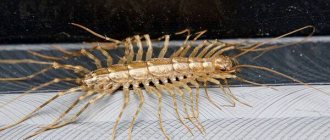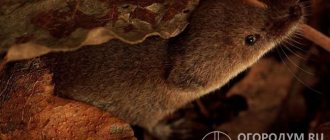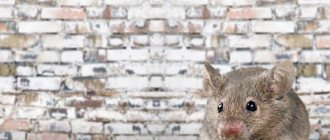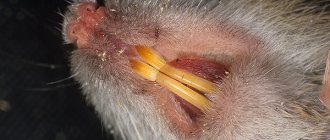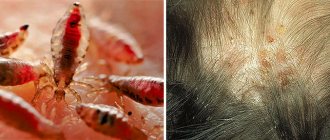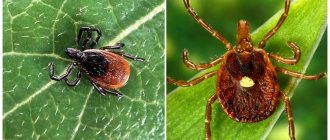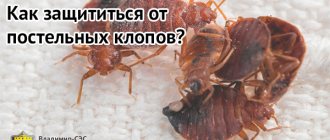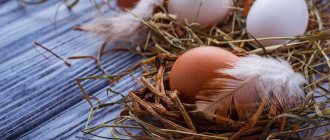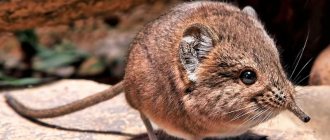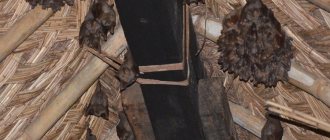In summer cottages and homesteads, you can sometimes find a miniature creature loosening the beds. With its long nose, the mouse-like animal tears up the upper layers of the soil in search of food, which is how it got its name - the shrew.
Someone begins to protect the baby, considering him useful, since he helps exterminate harmful insects, and some begin to expel these tiny animals from their territory in every possible way.
Common shrew
What other mice are known with a long nose (photos of them will be presented in the article)? These are shrews - small animals that look like ordinary mice, only with more elongated noses, a long tail and sharp teeth. Their body is approximately 7-10 cm long, and their tail is 4-5 cm.
The animal is dark brown on top, brown on the sides. The abdomen is grayish-white. The tail has short, thick fur. The fluffy coat also covers the ears, often only their tips are visible. Long mustache. There are several differences in color.
The shrew lives in underground burrows. Often, these are abandoned dwellings of moles or mice, which the animal occupies if, after a long search, it does not find a free crevice.
In soft soil, it makes the necessary passages along the surface with its nose-proboscis and front paws.
This long-nosed mouse lives in many European countries and Russia, settling in mountains, gardens, and fields. You can also see it near populated areas - villages and hamlets. Here in winter it is an ideal environment - there are warm barns nearby. A prerequisite is that its burrow must be located near a source of water.
What does a mouse eat in the wild?
In summer and autumn, when the time comes for the harvest to ripen, mice begin to actively prepare food reserves for winter. The main food of the animals is grain crops, as well as seeds of various plants. Field mice love wheat, barley, oats, and buckwheat.
Rodents living in forests feed on cedar and hazel nuts, maple and beech seeds, acorns, and small insects. And animals living near bodies of water prefer to eat leaves, roots and stems of plants, berries, grasshoppers, caterpillars, larvae, spiders and other invertebrates. House mice living near people willingly adapt to the human diet and eat bread, meat, dairy products, and sweets.
Animals living in the wild drink very little. The mouse body independently produces water by breaking down food. Additional sources of moisture are fleshy plant leaves, fruits, and vegetables.
Shrew lifestyle and nutrition
The shrew is a rather nocturnal animal, like many species of this family. In extreme heat, she never leaves her hole, since high temperatures cause her obvious painful sensations. There are cases when dead shrews were found - this is the result of the influence of sunlight. It is likely that the sun blinds them and they cannot find their way into their hole.
All shrews are terrible gluttons. Therefore, their main activity is searching for food. At one time they can eat 2-3 times their own weight in food. The shrew constantly twirls its proboscis in search of food. As a result, having caught even large prey with its sharp teeth, it will not let it go. The named animal even eats its dead brothers and cubs.
Shrews are very unsociable and, in any situation that is incomprehensible to them, immediately hide in a hole. In this they are similar to moles. These animals never get along with others, and even with their relatives. Except during mating season.
In the hope of eating each other, sometimes long fights take place between shrews - they stubbornly roll on the ground, clinging to each other with their teeth. Researchers joke about this about how good it is that these animals are small in size, otherwise they would quickly eat everyone on earth and, as a result, would die of starvation themselves.
Lifestyle
The shrew mouse tries to stay away from human possessions, forced to relocate by necessity - premature frosts, floods, fires, lack of food.
In the wild, shrews feed on insects, worms, and small species of mammals. They readily eat plant foods. They bring more benefit to humans than harm - they eat harmful insects. However, in case of a severe invasion, measures must be taken, since the shrew damages crops in the fields.
The animal lives no more than 2 years, often becoming a victim of attacks by wild animals, its large relatives, birds, lizards, and snakes. It is nocturnal and builds burrows underground.
The shrew has an excellent sense of smell. This feeling helps her live, since the animal’s vision is extremely weak. In this, the mouse is similar to another underground inhabitant - the mole.
Interesting!
The elongated nose of the mouse can be interestingly bent upward to catch the aroma of food or the smell of an enemy. The nasal passage serves as both the eyes and the respiratory organ.
Pregnancy, babies
A pregnant shrew carefully prepares for her litter. She lines her hole with dry leaves and grass to create a fairly soft litter. In May-July, about 6-10 cubs appear. At first the mother looks after them with trepidation and care, but very quickly her love fades. Then the cubs themselves go in search of food.
The shrew is very active and agile - it runs very fast, jumps far and even swims, if necessary. She makes whistling sounds. He has a highly developed sense of smell, but most likely never uses his sight and hearing.
Appearance Features
There are about 350 species of shrews in nature. 25 live in Russia. A feature for all representatives of the mouse genus is a long curved nose, which more closely resembles a trunk. The wool is velvety, soft, thick. The head is large. Near the tail there is a secretion that emits a pungent odor. Otherwise, the shrew is similar to an ordinary house or field mouse
There are many species, several animal names.
- Common shrew. Body size is about 8 cm, weight is around 160 g, like a regular mouse. The coat is soft, thick, brown on the back, gray on the sides. The ears are covered with hair, round, small. The nose is long, but blunt at the tip. The tail is equal to the length of the body, there is no hair on it. Unusual rodents live no more than 2 years.
- The shrew is tiny. They decided to call the animal that because of its small body size. This is the smallest representative of mammals. Body weight does not exceed 3 g, length - 5 cm. The cubs of this rodent are born less than 1 g in weight, 1 cm in length. The tail is 3 cm. The nose is more like a curved trunk. The coat is short, gray-brown in color. The transition is clearly visible; in winter the color is more intense. Small gray mice with a bent nose are listed in the Red Book of the Murmansk region.
- House shrew. The second name is long-tailed shrew. Body length 8 cm, tail 5 cm. The rodent often lives in gardens and vegetable gardens. With the onset of cold weather, it moves to basements, cellars, and barns. If there is a strong invasion of animals, measures have to be taken. The methods of control are no different from the destruction of gray mice. But it is preferable to use deterrence rather than extermination.
- Water shrew. Also called common shrew. The body length is about 12 cm, the tail is 5 cm. The mouse with a short tail, webbed feet, and thick fur can swim well and dives well. Settles near bodies of water - near rivers, lakes, swamps.
A photo of a shrew is presented below; you can clearly see the funny animal.
Mouse with a long nose
Common long-tailed shrew (house shrew)
Another mouse with a long nose is the common long-tailed shrew. This is an animal with a body length of 7-8 cm and a tail of 4-5 cm. The fur on the top and sides is brown, and on the abdomen it is light gray. There is brownish-white hair on the paws. The upper part of the tail is dark gray, the lower part is gray. The animal has 28 teeth.
From Africa, this species gradually spread throughout Europe, including northern Russia. The long-tailed shrew also lives in Siberia and Asian countries. This animal is found extremely rarely in groves and forests, as it prefers fields, gardens and vegetable gardens.
It is not for nothing that the long-tailed shrew has the second name “house shrew”. No other species will ever walk peacefully through a human home. It is successfully installed in basements, cellars, storage rooms, settling in some dark corner that is more or less safe. Can go hunting at any time of the day or night. In the wild, it gives preference to mammals, but in homes it arranges a “belly feast” for itself, choosing what is tastier and fattier - lard, meat, butter, sour cream. Other habits and customs of the house shrew are no different from other species.
An interesting behavior of her brood has been noticed - small animals move after their mother in an even line, holding the tip of the tail of the one in front with their tenacious teeth. This trait is almost never seen in other shrews.
Using ultrasonic repellers
You can try to scare the shrew away from the area by using repellent devices. They are mechanical, electromechanical and electronic.
You can make mechanical shrew repellers with your own hands. For this you will need old glass or tin jars, glass and plastic bottles. They are put on an iron rod, which is stuck into the ground so that it is located below the passages of the animals. Such a device will scare away the pest from the garden with sharp sounds and vibrations of the soil when the bottle or jar is exposed to wind.
If you are making a “spinner” from a plastic bottle, then in its bottom you need to make a hole with a diameter slightly larger than the diameter of the pin on which you plan to put it. Then rectangular windows are made on four sides of the bottle, one edge of which should be bent. When the wind blows, the bottle will spin and make a scary sound.
Computer disks hanging on ropes will have the same effect.
installation of ultrasonic repellers.
Of these repellers, we can recommend “Tornado OZV 01”. It is capable of scaring away shrews, moles, and mole crickets with the help of periodically emitted vibrations at a distance of 20-30 m. It is installed in the garden.
A more powerful device is “Anti-Crote”. Its range of action is up to 1000 m.
Lesser shrew
There is another mouse with a long nose. The name “small shrew” indicates that this mammal is very small in size. Its length is only 6 cm, of which 2 cm is the tail. The body of the animal is covered with soft fur. Brownish-red above, gray below.
The paws and proboscis are dark burgundy. The paws are covered with light hairs. It is noteworthy that this species has large ears in relation to the body. This mouse with a long nose is found in many countries - Italy, France, northern Africa, as well as in Russian cities located on the Black Sea coast.
The baby's lifestyle is similar to her relatives. It lives in fields, gardens, and near villages. But more sensitive to low temperatures.
Control measures
How to get rid of a shrew mouse depends on the degree of infestation and the type of object where the animals have settled. The same methods are used as for gray mice. The use of poisons is reserved for severe cases.
- It should be removed from gardens and vegetable gardens using the repellent method. Sprinkle the area with wood ash, lay out grass to prevent mice: burdock, elderberry, wormwood, tansy.
- In outbuildings, cats cope well with rodents. They set mousetraps and traps if necessary.
- To get rid of them indoors, they use poisonous bait, a glue trap, and other modern methods of rodent control.
The shrew bothers humans much less often than its relatives - ordinary mice. The appearance of several individuals on the site does not require emergency measures. The rodent will destroy harmful insects and loosen the soil.
Common shrew (water shrew)
If you are interested in a mouse with a long nose, then pay attention to the shrew. It has a variety of colors and belongs to the large species of shrews. Basically, its back is velvety black, and its belly is silvery-white.
The body length is, on average, 12 cm, the tail is 5.5 cm. Its thick hair does not get wet in water. The animal has 30 teeth. The fingers have elastic bristles that help with swimming, creating a webbed effect. The tail has the appearance of a ridge, which is also an indicator of its aquatic lifestyle.
The water shrew lives in France, Norway, Great Britain, Scandinavia, right up to the very shores of the Arctic Ocean. And also in eastern Europe and China.
This animal lives in floodplain meadows, near swamps. The favorite places of the water shrew are the banks of ponds, lakes and rivers, overgrown with reeds. She swims fast and dives deep.
It feeds on aquatic worms, insects, beetles, frogs, fish and fish eggs. During the cold period, it stores reserves in its hole. Spends most of its time in the water, but also behaves quite confidently on land.
Reproduction
The mating season for shrews lasts about 5 days. A female mates with several males. They raise offspring on their own, sometimes young females are helped by experienced individuals. Pregnancy lasts 24 days.
Shrew Reproduction
Mice are born naked, blind, deaf, and with undeveloped limbs. Within a week they grow thick hair, after 14 days eyes appear, hearing appears, and the development of limbs is completed by 20 days of life. At 30 days, the mice become completely independent. They are expelled from the nest, but live in the same colony.
Interesting!
Shrews have one interesting feature of mass movement of the entire family. The mother mouse gives her tail to the most active baby, who gives his tail to his brother or sister. So everyone takes turns forming a “train”. They move together from one place to another.
About 5 cubs are born in one litter. The female gives birth about 3 times per year. With the onset of cold weather, activity decreases. An adult lives for 2 years, the male always dies 1 month earlier. Cubs often die in late autumn, the strongest survive and reproduce in the spring.
What does it look like
The shrew mouse is one of the smallest mammals. The weight of the smallest animal reaches 2 grams and does not exceed 3 centimeters. Newborn cubs of this shrew weigh less than one gram. But some individuals are mouse-sized. Their weight reaches 200 g, and their height is 12 cm.
The body structure of the shrew has the following features:
- Its head is large and ends with a small curved proboscis.
- The fur is dense, short, velvety.
- In some species the tail is short, while in others it is longer than the body.
- The ends of small teeth are covered with strong enamel, which wears off towards the end of life.
- Near the tail there is a secretion that emits a pungent odor.
The animal with a long nose, similar to a mouse, lost its acute vision during evolution. He navigates in space thanks to his keen sense of smell.
It is worth looking at a photo of a shrew and it will become clear that the appearance of a shrew is very different from an ordinary mouse.
The mammalian skull has an expanded brain section. The weight of the brain is 1/10 of the body weight, which exceeds the size of humans and dolphins.
Types of shrews There are three subfamilies of shrews, which include 350 different species of animals. About 25 species of this mouse live in Russia. The most famous are the common shrew, house shrew, tiny shrew and water shrew.
Common shrew
The elongated nose of the animal has a blunt shape. The back of the body is dark brown. The belly is also brown, but lighter. The ears are completely covered with short and thick fur. The tail of the shrew mouse is equal to the length of the body. There is no fur on it. The lifespan of a mouse with a long nose is two years.
Young animals often have a lighter color.
The animal can grow up to 8 mm. Weight ranges from 4 g to 16 g. The tail grows up to 7.5 centimeters.
Tiny shrew
The smallest mammal that lives on the territory of the Russian Federation. Body size ranges from 4-5cm. The tail does not exceed three centimeters. The weight of the animal is 2 g, but can reach 4 grams. The nasal portion of the head resembles a proboscis.
The tiny animal is known as a mouse with a short tail. The length of the tail is half the length of the body.
The body and tail of the mammal are covered with thick and short hair. The belly is silver in color, and the back is brown or brown. The color transition from dark to light is clearly visible on the sides of the body. In winter, the animal is more intensely colored.
The shrew is listed in the Red Book of the Murmansk region. It is impossible to calculate the exact number of the tiny shrew due to its small size.
House shrew
This mouse is also called the long-tailed shrew or common shrew. The length of the animal reaches 8 centimeters, and the tail grows up to five centimeters. The fur on the back is dark brown. The belly is gray.
The animal loves to live in gardens and fields. It has perfectly adapted to being close to humans.
The shrew mouse can live in the basement or cellar. There she looks for human food and can eat up supplies of lard, sour cream, and meat. Then you have to deal with getting rid of the invader. In the wild, the animal hunts insects and small mammals. It is guided by smell and can funnyly bend its nose while sniffing out prey.
Water shrew
The animal also has another name - common shrew. The animal grows up to 12 centimeters, and its tail reaches 55 mm in length. The fingers have membranes that help the mammal swim.
The mouse can dive and swim quickly. Her life takes place near swamps, lakes and rivers. There she hunts and gets her food.
Blob fish
Freshwater fish with human teeth are found in rivers in the Amazon and Orinoco basins, as well as in Papua New Guinea. A nightmare for local fishermen who are afraid to swim in the water because pacu confuse male testicles with nuts falling from trees into the water.
One of the strangest animals in the world. From the appearance of this creature, one can say that it is despondency incarnate. Lives in deep waters off the coast of Australia and Tasmania.
The blobfish lives in the depths and its flesh is a gel-like mass with a density slightly less than that of water. This allows the “dull” creature to stay afloat.
Natural enemies
Due to their small size, the animals are vulnerable to larger animals. The long-nosed mouse can become a victim of birds of prey, ferrets, weasels, cats, dogs, and foxes. However, predators usually refuse a snack if they smell the peculiar aroma of a shrew.
The enemy of this mouse is also man. People often mistake them for pests and destroy them. But, as practice shows, these animals bring more benefits. Of course, they can damage the root systems of small plants when they dig while chasing their prey.
But at the same time, they perfectly loosen the soil, saturate it with oxygen and fight insects that pose a danger to the crop. They manage to destroy pests in places where even birds are unable to reach them.
Description
The long-nosed animal, sometimes mistaken for a mouse , is the smallest mammal belonging to the order of insectivores. Today, more than 350 species of shrews are known, the smallest of which weigh only 1.2 g and grow up to 3–5 cm.
Smooth, thick, velvety fur has the ability to self-clean, thanks to which the animal remains clean even on wet ground. Weak and short front legs are unable to dig up dense soil, which is why the animal loves dug up beds or loosened soil in flower beds.
The head structure of these animals is quite interesting. The skull is strongly elongated and pointed near the nose, resembling a small movable trunk. The eyes are quite small and do not play a significant role in the life of the shrew. Due to poor eyesight, her senses of smell and hearing have greatly developed, which help her navigate.
The tail, depending on the species, can be either almost invisible or larger than the size of the body. Near it and on the sides there are skin glands that can secrete a special secretion with a pungent odor.
For shelters and breeding, shrews try to use ready-made tunnels left by other garden pests. Therefore, they are sometimes called mole-like mice.
